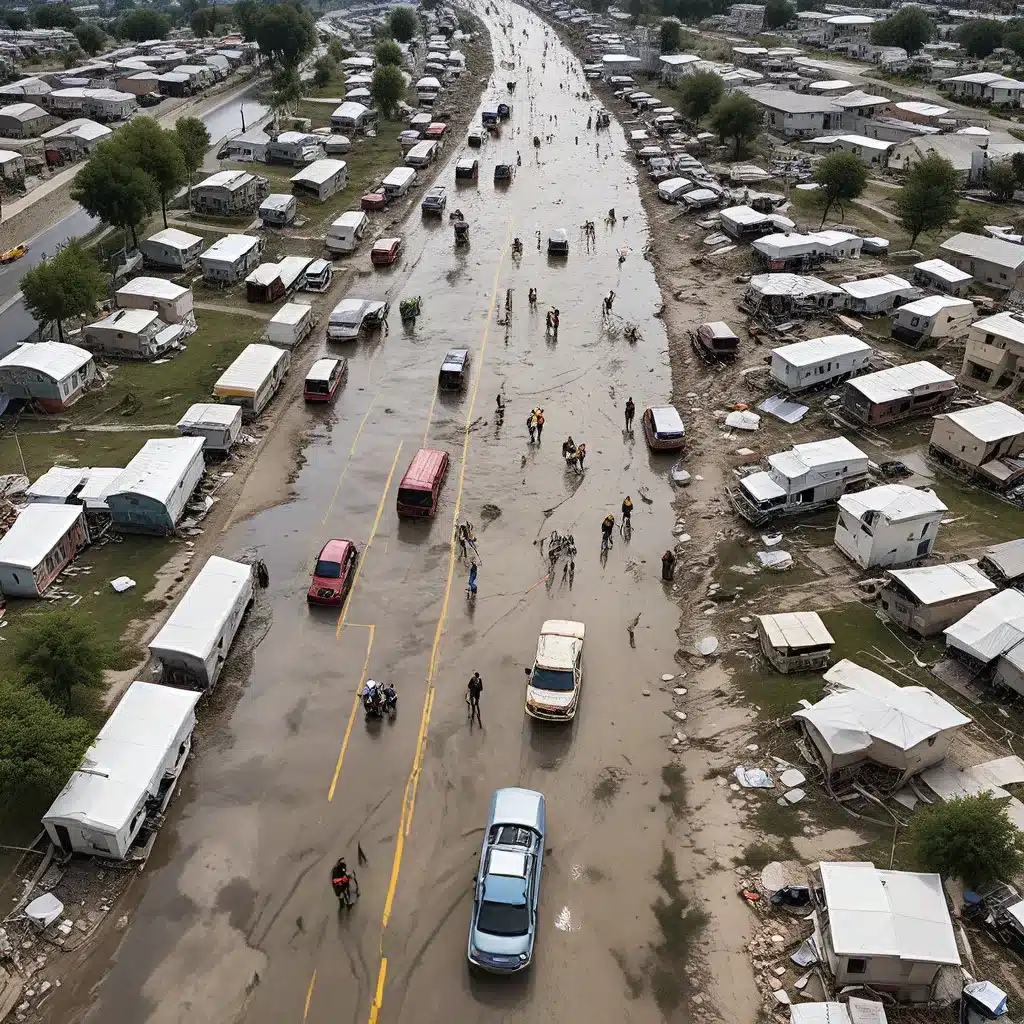
The Rise of Sensor Networks in Emergency Response
Sensor networks have emerged as a transformative technology in the realm of disaster response and emergency management. These interconnected systems of sensors, communication modules, and data processing components have the potential to revolutionize the way we prepare for, respond to, and recover from crises.
At the heart of this shift is the growing presence of the Internet of Things (IoT) – a network of connected devices that can gather, analyze, and exchange data. By integrating IoT sensors and technologies into disaster response strategies, sensor networks can provide a wealth of real-time information to emergency responders and decision-makers, enabling them to make more informed and effective decisions.
Research has highlighted the significant impact that sensor networks can have on public safety and emergency preparedness. These systems can monitor environmental conditions, detect early warning signs of disasters, and facilitate coordinated response efforts, ultimately saving lives and mitigating the devastating effects of crises.
Enhancing Situational Awareness with Sensor Networks
One of the key benefits of integrating sensor networks into disaster response is the improved situational awareness they can provide. By deploying a network of strategically placed sensors, emergency responders can gain a comprehensive understanding of the unfolding situation, including critical details such as:
- Precise location data: Sensors can pinpoint the exact coordinates of incidents, enabling rapid deployment of resources and facilitating efficient search and rescue operations.
- Environmental conditions: Sensors can monitor factors like temperature, humidity, air quality, and water levels, providing crucial insights into the evolving nature of the disaster.
- Real-time data: Sensor networks can transmit live data to command centers and first responders, allowing them to make timely and informed decisions in the midst of a crisis.
Innovative communication platforms, such as virtual command centers and adaptive streaming technologies, can further enhance the integration of sensor networks into emergency response operations. These tools enable seamless collaboration and information sharing among stakeholders, even in low-bandwidth environments.
Leveraging Big Data and AI for Predictive Insights
Sensor networks not only provide real-time situational awareness but also unlock the power of Big Data and Artificial Intelligence (AI) for predictive analytics and decision support.
By analyzing the vast amounts of data collected by sensor networks, AI algorithms can identify patterns, detect anomalies, and forecast potential risks. This predictive capability allows emergency management agencies to proactively intervene and optimize resource allocation, ultimately enhancing the effectiveness of their disaster response strategies.
Smart city initiatives have already demonstrated the transformative potential of integrating sensor networks, Big Data, and AI into public safety and emergency management. By leveraging these technologies, cities can anticipate and mitigate the impact of natural disasters, infrastructure failures, and other critical incidents, ultimately improving community resilience.
Addressing the Challenges of Sensor Network Security and Energy Management
As sensor networks become increasingly prevalent in disaster response and emergency management, it is crucial to address the challenges associated with security and energy management.
Security is a paramount concern when it comes to sensor networks, as these systems often transmit and store sensitive data related to critical infrastructure, emergency response operations, and public safety. Robust encryption protocols, access control mechanisms, and secure communication channels are essential to protect against cyber threats and ensure the integrity of the data being collected and shared.
Furthermore, the energy-intensive nature of sensor networks poses another significant challenge. Sensors are often deployed in remote or hard-to-reach areas, making power management a critical consideration. Energy-efficient sensor and communication node designs, as well as innovative power sources (e.g., solar, wind, or kinetic energy harvesting), can help optimize the operational lifetime of sensor networks and ensure their reliability during emergency situations.
| Security Protocols | Energy-Efficient Designs |
|---|---|
|
– AES encryption for data security – Role-based access control – Secure communication protocols (e.g., TLS, DTLS) – Intrusion detection and prevention systems |
– Low-power sensor nodes and microcontrollers – Adaptive duty-cycling and power management – Energy harvesting technologies (solar, wind, kinetic) – Efficient data compression and transmission algorithms |
The Future of Sensor Networks in Disaster Response
As technology continues to advance, the role of sensor networks in disaster response and emergency management is poised to become even more significant. Emerging trends and future developments in this field include:
- Increased sensor diversity: The integration of specialized sensors (e.g., chemical, biological, radiological, nuclear, and explosive detectors) can provide enhanced monitoring and early warning capabilities for a wider range of disaster scenarios.
- Autonomous and self-healing networks: Advancements in machine learning and autonomy will enable sensor networks to adapt and reconfigure themselves in response to changing conditions, improving their resilience and reliability during emergencies.
- Multi-modal data fusion: The integration of data from diverse sources, including sensor networks, satellite imagery, and crowdsourced information, can enhance situational awareness and support more comprehensive decision-making during crisis situations.
- Edge computing and 5G connectivity: The deployment of edge computing and 5G networks can enable real-time data processing and low-latency communication within sensor networks, empowering emergency responders with even more timely and actionable insights**.
As we continue to leverage the power of sensor networks and IoT technologies, we can transform the way we prepare for, respond to, and recover from disasters, ultimately building more resilient and secure communities for the future.
Sensor-Networks.org is a leading resource for professionals, researchers, and enthusiasts interested in the latest advancements in sensor network technology and its applications, including the critical role it plays in disaster response and emergency management.